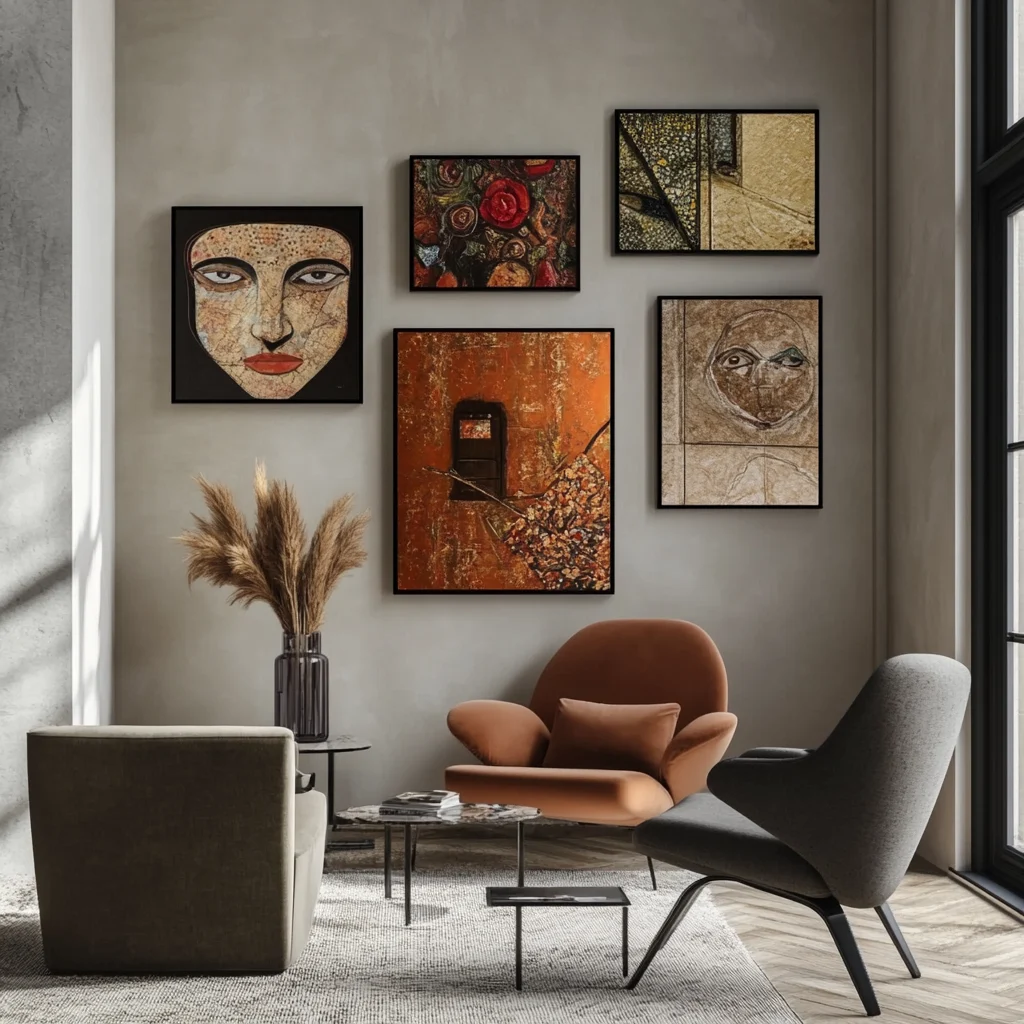In my home I have a few paintings by local artists, some limited-edition prints (where the artist creates and sells a few handmade prints), some commercial prints that caught my eye, and a few posters from art shows that featured renowned artists that I could never afford. Although paintings, prints, posters and fiber or textile art are all wonderful additions to rooms-—there is a reason for buying an original painting from the actual creator.

Each original painting has a story behind it—a story about
- The artist, their background and goals
- The choice of images
- Type of paint or materials that are used
- How you found the painting and came to buy it.
Original art looks different from each direction and when the light changes; you can see the brushstrokes and the intricate details. And if no-one bought art there wouldn’t be any artists.
Most of us begin with the idea that collecting art is something that only very wealthy people do because it’s very expensive, but that doesn’t have to be the case. There are some relatively inexpensive ways to start an art collection.
- Go to the graduation shows at a local art school. In most cases the pieces on display are for sale. You can find an artist or two that you like and possibly follow that person for a number of years or throughout their career.
- In some cities and towns there are cultural centres that exhibit and sell the work of local artists.
- Often artists in a particular area will organize annual show along with a studio tour. I prefer the shows because you can browse anonymously but studio tours can be a fun event, particularly if you are on vacation. If you do a Google search on art studio tours in (add your area) you will likely find an accompanying show.
- Christmas markets tend to focus on crafts, but you can often find original wood or glass work.
- There are ‘art in the park’ sales—often involving artists who create as a hobby/
- Online galleries such as Artfinder, Artsy and Etsy are also good places to browse although it’s not quite the same as standing three feet away from a piece that you like and imagining it in your home.
- Commercial art galleries are worth a visit although they are usually more expensive because the costs of running the gallery are added on, with the gallery owner often acting as an agent. If it is not busy the gallery representative will usually be willing to provide you with information about the artwork even if you tell them that you are just trying to educate yourself and don’t intend to buy at this point.
If you are just starting out, you may not even be sure of what it is that you like. It’s not uncommon for people to buy a print or a poster because it fits the colour scheme of their room—and there’s nothing wrong with this. As you think about what drew you to this art, you’ll discover your style preferences. You don’t have to know anything about art when you start. You will learn more as you go along, and it could be the beginning of a new hobby or passion. Soon you’ll be spending a rainy afternoon having a coffee and a walk through a civic or national gallery.
A final suggestion is to keep track of what you buy. Keep your receipts with the cost of your purchase and the place where you bought it as well as biography of the artist and any certificates of authenticity. These may be useful for insurance purposes and if you decide to sell the art at some point in the future, the buyer will want to know the history or provenance.

